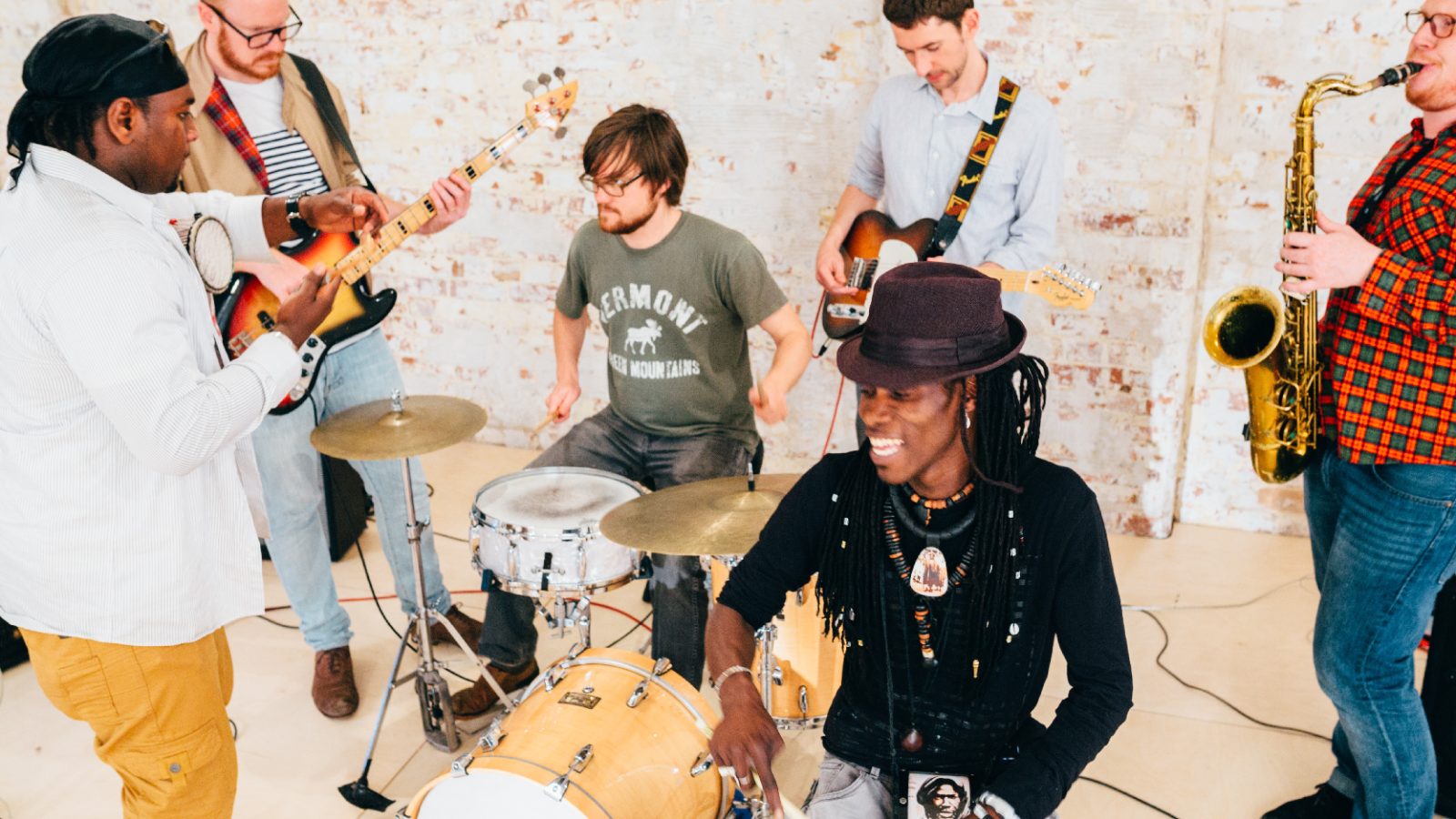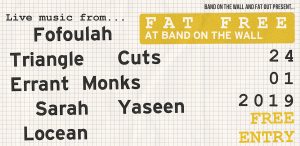
Inception to Mixdown: Tom Challenger breaks down the making of Fofoulah’s Seye
While modern music technology allows us to work in new, inventive and convenient ways, modern day schedules and financial restraints can force us to further compromise our creative methods. Producer, multi-instrumentalist and Fofoulah member Tom Challenger knows such restrictions well, but adapted incredibly to produce the band’s astonishing new record, Daega Rek. Listening to the 40-minute effort, you’ll hear everything from sounds recorded in one of the country’s finest recording studios, right through to elements processed and sequenced on portable gear, tweaked and bounced while riding the tube! The sonic landscaping that is Fofoulah’s creative process results in an energetic mix of sounds unlike any other. Tom’s adaptability, coupled with the band’s skill and versatility, makes the broad-ranging record a resounding triumph. Having recently launched the record with a show at The Pickle Factory in Bethnal Green, we caught up with Tom to discuss the production of Seye, a hypnotic, multi-layered track from the project. The band play live at Fat Free, our collaborative showcase with the brilliant folks at Fat Out, on 24th January.
As you were formulating Daega Rek’s recording concept, did you have any particular producers or artists in mind whose previous work inspired you, or reassured you that the unconventional workflow could lead to interesting results?
TC: ‘The recording process really happened as it did because of practical reasons, more than anything. We had lots of initial recordings of Drums and Sabar – as we went on I created the bare bones of the track. When this had been done, Kaw Secka would come and add his lyrics, around which I’d then rework the song, adding more material if I needed to. There were lots of inspirations for the music… too many in fact! Throughout the 18 months it took to make, some constants were Big Fun/On The Corner by Miles Davis, Dean Blunt, DJ Rashad, Klein, RZA… we’re all very broad musicians – on a personal level I’m dealing with really avant-garde music right through to folk music to RaRa from Haiti. It all contributes’.
Having recorded percussion tracks at Real World Studios, you worked at your own London studio to finish recording, arranging and producing tracks. Roughly how much time do you spend in the studio completing Seye? Was it a challenging track requiring lots of alterations, or did it flow freely?
TC: ‘The main bulk of Seye’s drum track is actually programmed – Dave gave me a little sample of him messing around on some [Korg] Volca Beats. Most of the track was actually formed in a Travelodge (!), however I tweaked and added the vocals over quite a few sessions. I think the biggest challenge was actually making the album with no budget for allocated time to work on the album. Although I have access to the studio, I was working loads, on the road, two young kids et cetera, et cetera… editing vocals on lunch breaks, bouncing things down on the tube… pretty grim! However, I think the album sounds like it does precisely because of the way it came together. I wouldn’t change that, and I actually wouldn’t mind working like that again.’
What was your process for creating the beats, harmonic stabs and atmospheric elements we hear in Seye? Were you working with soft synths in a DAW, shaping sounds from samples, or perhaps working with hardware?
TC: ‘As with most of our music, the rhythmic detail comes out of, or off the drum/sabar parts. The sounds – apart from some Juno, DX7 and SH101 on the bottom end – are all generally my own sample patches I made in Ableton. They’re quite complex sounds, mainly made of found sounds, or samples of rehearsals or gigs we’ve done. This was the general pattern I used throughout the album. Obviously there’s more live drums on the rest of the disc. I didn’t use any other hardware apart from the synths above.’
You don’t play saxophone on this track, was it easy avoid using an instrument you’re so familiar with?
TC: ‘There’s actually no saxophone on the album; there are some samples here and there, but everything was altered so much, you can’t really tell it’s there! It felt like a good thing to do as a process too – in terms of making music with it not in the potential sonic mix. I think the album would have been very different, even if it was on just one tune’.
Having arranged a dense and energetic track, did you have to do a lot of EQ’ing, processing and mixing to get the elements sitting comfortably together, or did they do so fairly naturally?
TC: ‘Yeah, I worked hard on the mix for this – partly because of my own weaknesses, and partly because the nature of the instruments and samples I used needed it. For example, the Kit part is doubled, using samples from a rehearsal recording (pre-iPhone! maybe a H4 or something terrible) I did with an old band of mine. I had to work on that a lot, but it ended up sitting really well – perhaps because I was really having to fit the sounds around each other. Having said that, I did about 4 different mixes of this tune…it took a while’.
Kaw Secka explores the theme of Marriage on this track. Did you discuss ideas with Secka and did his contributions inspire you to make any additions or alterations to the work, to reflect his ideas?
TC: ‘Working with Kaw was fun on this. I don’t speak Wolof, and he’s aware of that. However, we’ve known each other for over 10 years, and there’s a trust there that means I didn’t enquire too much until after. I of course asked him about edits so that the words would still flow. It was more about providing him with a landscape on which he could do his thing, naturally. He speaks on the mic super melodically though – I wrote a melody for the tune Njita that was basically taken from the pitches he was talking at. I did the same with his Tama (talking drum) on Pulo too’.







